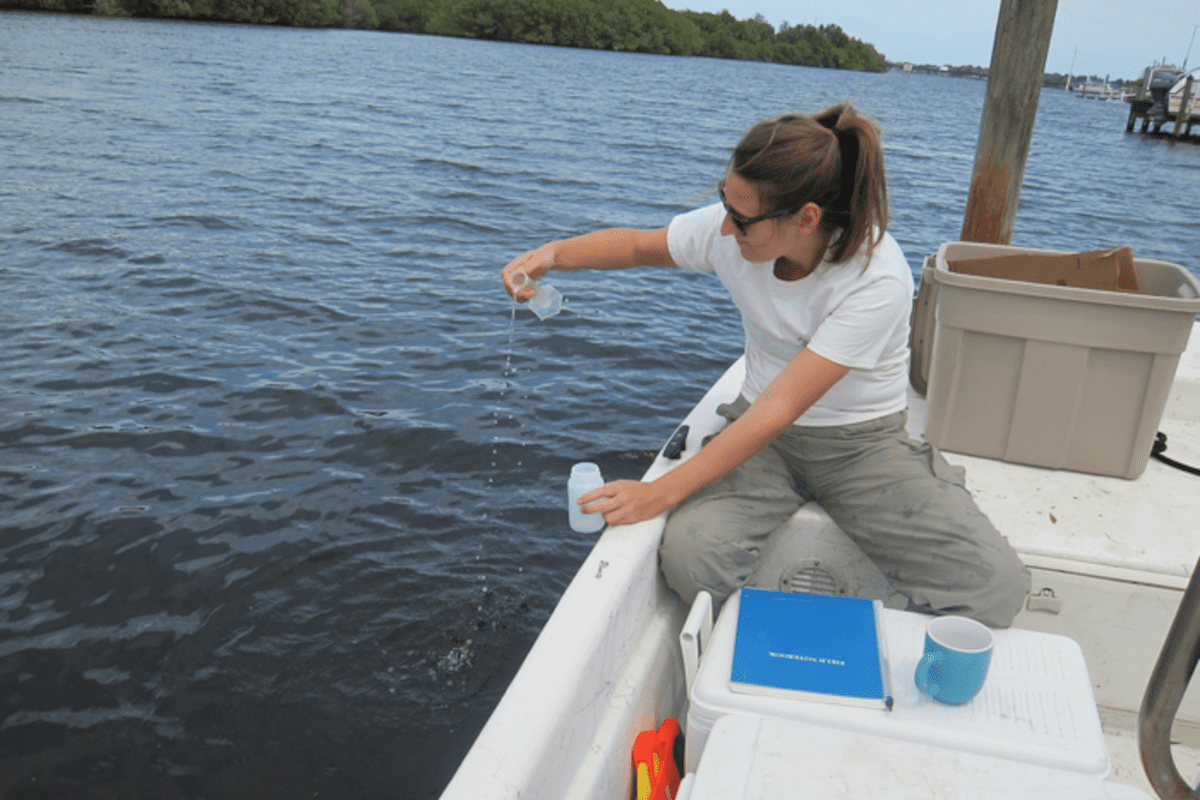Study finds even ‘properly functioning’ septic systems contaminate groundwater and surface water, as a group from Florida Atlantic University explains.
For more than a decade, fertilizer leaching and associated stormwater runoff were thought to be the major drivers of harmful algal blooms in Florida’s Indian River Lagoon. Despite the numerous residential fertilizer ordinances passed since 2011, water quality, harmful algal blooms, and seagrass loss, which has resulted in mass deaths of the threatened Florida manatee, have continued to worsen.
There are more than 300,000 septic systems permitted in six counties adjacent to the 156-mile-long Indian River Lagoon, which makes up 40 percent of Florida’s eastern coast, and in Indian River and Martin counties, septic systems represent more than 50 percent of wastewater disposal. Five inlets allow the lagoon’s waters to drain into the ocean, potentially impacting another important Florida ecosystem.
To determine if septic systems in Indian River County contribute to nutrient enrichment of groundwaters and surface waters that discharge into the central Indian River Lagoon, researchers from Florida Atlantic University’s Harbor Branch Oceanographic Institute assessed water quality at 20 sites in four Indian River County sub-drainage basins.
For the study, published in the journal Marine Pollution Bulletin, they measured stable nitrogen isotopes in groundwater, surface water, and macrophyte tissue to identify nitrogen sources impacting the Indian River Lagoon. Sucralose, an artificial sweetener that is not completely broken down by septic systems or wastewater treatment plants, was used as a human wastewater tracer, and fecal indicator bacteria density was used as an indicator of wastewater pollution.
Results reveal that nitrogen enrichment of all sub-drainage basins in this study supports that even “properly functioning” septic systems contribute nitrogen to surficial (shallow) groundwater. Furthermore, shallow ecosystems without a significant source of flushing and dilution, such as the central Indian River Lagoon are more susceptible to inputs from contaminated groundwater. Evidence shows that this issue is likely widespread in the Indian River Lagoon, including its canals, tributaries and rivers.
Groundwater had significantly higher dissolved nutrient concentrations, nutrient ratios and more enriched stable nitrate isotopes than surface waters, indicating septic system-enriched groundwater as a nitrogen source to adjacent surface waters. This finding has implications for nutrient loading and pollution, as submarine groundwater discharge is a primary mechanism for nutrient and microbial transport to coastal waters.

Researchers found that enterococci and fecal coliform counts were similar between all the drainage basins, indicating that bacterial pollution is pervasive throughout the surface waters of the central Indian River Lagoon. Sucralose was found in surface waters throughout the study area corroborating the elevated nitrogen concentrations, enriched stable nitrogen isotope values and high surface water fecal indicator bacteria, demonstrating that drainage systems in Indian River County are contaminated by septic system waste.
“Humans are increasing nitrogen loading at unprecedented rates that now exceed sustainability of the Earth’s vital ecosystems,” said Brian Lapointe, senior author and research professor, FAU Harbor Branch. “Our study illustrates that implementing advanced wastewater treatment or distributed wastewater (DWT) technologies in key locations may allow for decreased nutrient loading and improved estuarine water quality and seagrass health in the Indian River Lagoon and elsewhere with similar conditions. Moreover, as sea level rise is expected to further confound these issues in addition to more extreme and frequent tropical storms and hurricanes, a better understanding of these dynamics will be essential for sustainable management of coastal resources.”
Findings from the study also support that Florida’s sediments, such as sandy soils and porous limestone, are not suitable for nutrient removal by conventional septic systems, particularly in low-lying elevations with seasonally high water tables.
“High seasonal water tables have been observed to reduce septic system functionality in many locations, including North Fort Myers, Jupiter, and St. George Island in Florida, southern Rhode Island and Ontario, Canada, reinforcing the geographical scope of these issues,” said Rachel Brewton, corresponding author and research scientist, FAU Harbor Branch. “Florida has both unsuitable soil types and high groundwater tables that combined can result in septic system waste continuously flowing into groundwater, contaminating it with high levels of nutrients and fecal indicator bacteria. This contamination ultimately discharges into surface waters such as canals, rivers and estuaries contributing to water quality degradation and harmful algal blooms.”
Researchers observed seasonal differences during the study. Generally, dissolved nutrient concentrations in both groundwater and surface waters were higher in the wet season. This is likely the result of increased infiltration, groundwater flow and stormwater runoff in the wet season. Groundwater was less variable by season than was surface water. The effects of septic systems on surface waters in the four drainage basins, and ultimately the receiving waters of the Indian River Lagoon, are exacerbated by eastward flow of the surficial aquifer.
“Given the recent unprecedented harmful algal blooms and catastrophic seagrass losses observed in this estuary, identifying specific nutrient drivers is essential to inform restoration policies,” said Lapointe. “Importantly, our research supports similar findings in more temperate watersheds, confirming that septic systems near sensitive aquatic ecosystems can promote increased harmful algal blooms through nitrogen enrichment.”
Study co-authors are Laura Herren, a biological scientist, FAU Harbor Branch; Lynn Wilking, lab chemistry coordinator, FAU Harbor Branch; Marie Tarnowski; and Margaret Vogel, PhD, a postdoc at the University of Vienna.
The work was supported by the Save Our Seas specialty license plate fund administered through Harbor Branch Oceanographic Institute Foundation (HBOIF) and the Florida Center for Coastal and Human Health, which was developed by and receives on-going support from grants provided by HBOIF.







